#stereomicroscopic
Text
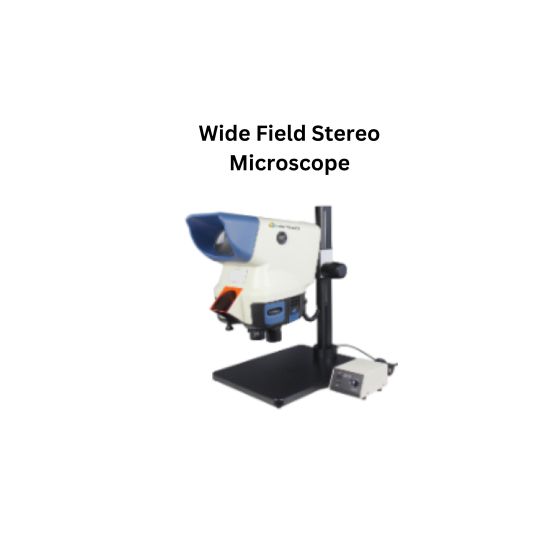
Wide field stereo microscope
Wide field stereo microscope is a tabletop unit with larger viewing field without eyepiece. Sharp and stereoscopic images are observed from the lens in microscope head. Built-in LED illumination provides bright and even light for comfortable viewing. Brightness can be adjusted with the external power box.
#leica stereomicroscope#stereo microscope with camera#amscope stereo microscope#leica dissecting microscope
0 notes
Text
https://hsmleindia.com/product/stereo-zoom-microscope-hsz-800/
Stereo Zoom Microscope - Z800
Stereo Zoom Microscope-HSZ-800 is new generation Stereo zoom video microscope with microcomputer which drives the operation system Win CE5.0 and display system. It provides clear high-contrast image, wide field and long working distance. It can be used for observation studies in medical and health, farming and forestry, as well as public security departments, schools and scientific research institutes, and is also used for inspection, assembling and repair of tiny spare parts in electronics and precision machine industries. Similar to a traditional stereo microscope, an LCD digital zoom stereo microscope typically has binocular eyepieces for comfortable viewing. The eyepieces may also have adjustable diopter settings to accommodate individual users.
#manufacture#industrial equipment#manufacturer#testing#metallurgical#microscope#microscopes#metallurgicalmicroscopes#zoom stereo microscope#stereomicroscope#stereozoommicroscopes#binocular stereo microscope#stereo zoom microscopes
1 note
·
View note
Text
TRIKEPATROL Big Round Ass Slapped And Pounded Doggystyle
German Teen Tight Tini Facesitting Dirty Talk Joi in POV
Sexy Blonde Muscle Porn Star with Big Tits
ass spreading
Amy's bbc cuckold adventures 1
Hot blonde Holly Brooks shaved pussy crempie
cam sex with matured sister in law
soloboy in shower
Hentai Big Boobs Milf Fuck Hard And Tied
Wrapping her soft snatch lips around his huge erect cock
#gipsyry#protonickel#tricoryphean#anthropoteleoclogy#posthume#condescendingness#dinetic#metal-coated#accompanist's#sweetmeats#coccidia#stereomicroscopically#ungelt#paunches#AAO#regeared#Shadai#Dougall#acalycinous#perosmic
0 notes
Note
giliard: hi stella take a look at this :)
*hand over the stereomicroscope*

Stella: ?? (Takes a look in the stereo microscope)
22 notes
·
View notes
Text
being normal about stereomicroscopes again
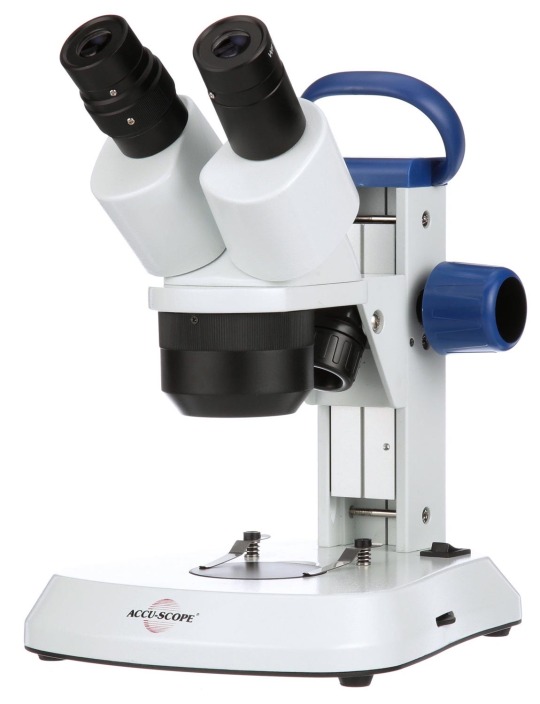
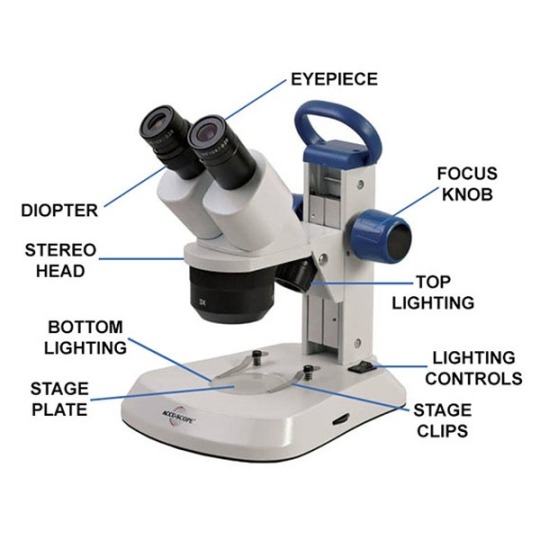
👉👈 sir just one chance please
#im just trying to analyze drosophila#he has no right being this pretty#objectum#me? making original posts? its more likely than you think#os/or
12 notes
·
View notes
Text
I miss doing bio labs so here’s one of my favourite ones from last semester…
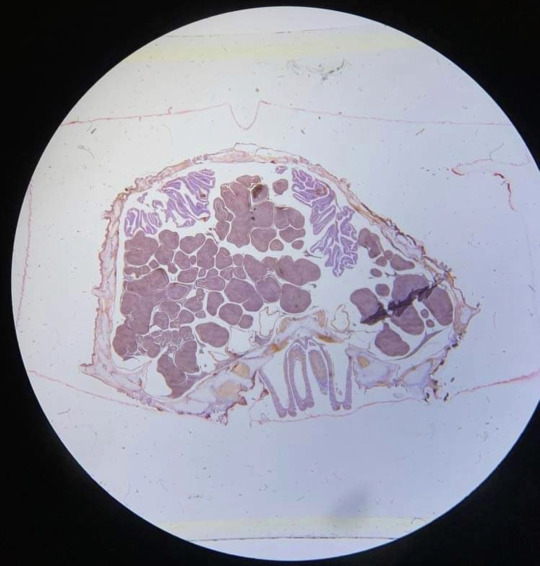
Transverse section of the arm of a starfish (Asterias rubens)
Starting from the centre of its body, three major systems branch off into each of its five arms*.
The water vascular system (at the bottom, the large loop-looking structures) helps with respiration and food gathering
The digestive system (the light purple-ish structures on either sides at the top of the picture)
The reproductive system (the big dark purple-ish blotches more in the centre of the arm).
(The picture was taken by me during the lab, the cross section is magnified using a stereomicroscope)
* There is, of course, more going on than these three structures, this is basic anatomy
#marine biology#science#animals#biology#starfish#lab#dissection#stem studyblr#stem aesthetic#stem student#stemblr#biology studyblr#biology student#college
34 notes
·
View notes
Text
Bioarchaeological and paleogenomic profiling of the unusual Neolithic burial from Grotta di Pietra Sant’Angelo (Calabria, Italy)
Published 24th July 2023
Study of a Neolithic burial with unusual placement at a rather high altitude, far from inhabited areas, lack of funerary equipment and prone deposition of the body found located in Grotta di Pietra Sant’Angelo, Southern Italy.

geographical location, excavation area and skeletal remains from the burial
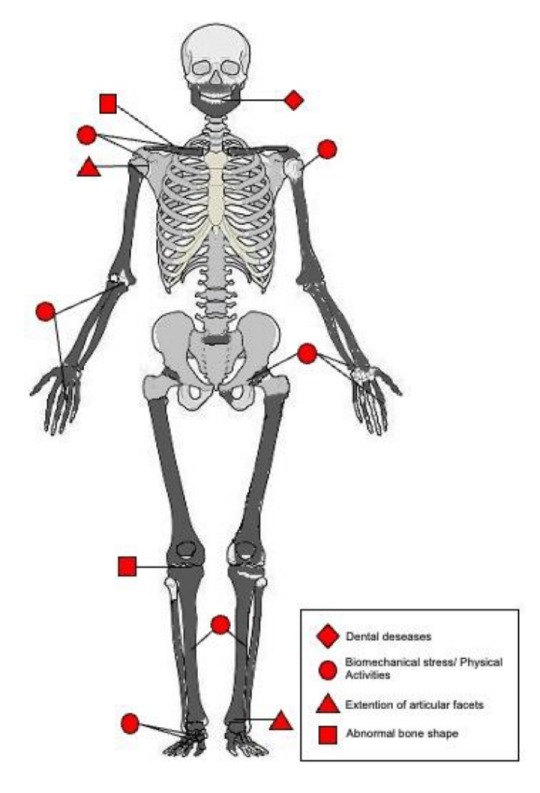
The individual is suspected to be an adult 30 years old male and 164cm tall.
Abnormal bone formation or destruction patterns were observed at the joints. Marginal osteophytes were discovered on the proximal epiphysis of the right ulna and distal epiphysis of the right and left radius as well as on the left acetabulum. Depressed surfaces with smooth edges were observed on the right distal surface of humeral trochlea, on posterior surface of the left and right tarsal navicular bones and on the first proximal phalanx of the right toe. These characteristics are typical of osteochondritis dissecans, a pathological condition.
Extreme wear patterns on the teeth were present represented in loss of crown height in the lower incisors, almost absent dental enamel from the occlusal surface and multiple fractures and chips in their teeth, causing a large reduction in tooth size. alveolar bone. Small amount of calculus on the teeth surfaces were also identified. CT-investigation of the jaw revealed a generalized bone absorption at the alveolar level, indicating a periodontal disease that could have led to the loss of the maxillary second premolar.
It is suggested this individual had a rather active lifestyle/occupation that remained consistent throughout their life.
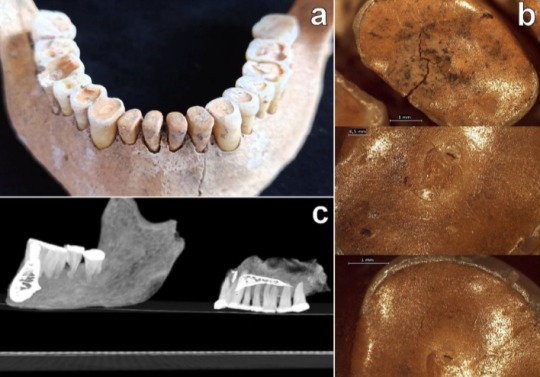
Mandible jaws, stereomicroscopic images of the occlusal surfaces of lower incisors and canines, and CT scan of mandible jaws

Starch granules found in the dental calculus fleck
Microdebris analysis of the dental calculus revealed the presence of a variety poorly preserved microremains, most of which were consistent with plant tissues, starch granules and a trichome. These micro remains were not identifiable to a species or family level. It is hypothesized that these remains indicate the consumption of starchy food and leafy crops and presence of remains such as fibers, mineral grit may have contributed to the dental wear of the individual and could also be associated with occupational activity.
Further study into the dental material of this individual also revealed the presence of several host-associated bacteria, among which are different members of the genera Treponema, Prevotella, Streptococcus and Methanobrevibacter. .etagenomic analysis highlighted the persistence of Treponema denticola, Tannerella forsythia and Porphyromonas gingivalis, known to be strongly associated with periodontal disease and a higher risk of developing esophageal cancer, diabetes mellitus, and are proposed as a risk factor for other several syndromes. More present bacterias of interest include Aggregatibacter, Cardiobacterium, and Eikenella corrodens that could be in rare cases associated with the development of infective endocarditis. The presence of dental pathologies and the detection of amylases are indicative of the consumption of a carbohydrate-rich, typically Neolithic, diet.
DNA was extracted from the molar to test for endogenous DNA persistence and provide a genetic profile of the individual.
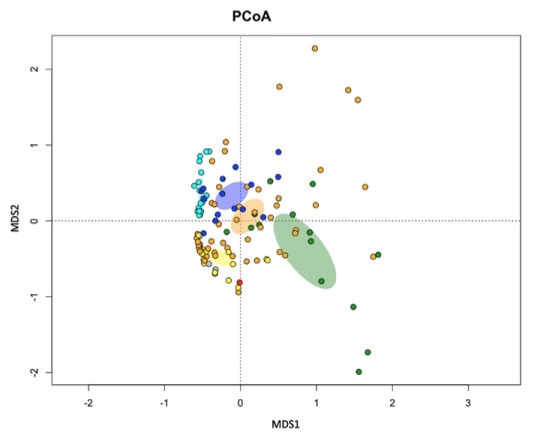
Principal Coordinates Analysis. Male individual (red) and 114 samples from Neanderthal (green), pre-agricultural (orange), Neolithic (yellow), pre-antibiotic period (blue) and modern-day humans (light blue).

Phylogenetic reconstruction of ancient K-related mitochondrial lineages, PCA projection of individual into the variability of ancient Italian and Mediterranean Neolithics, the distribution of G2a-related Y-chromosome lineages in ancient Europe between 8000 and 2500 BCE and 2500 BCE—1500 CE, individual (blue dot) projected into the variability of modern Italians clusters
Thia genetic data shows that this individual falls into the variability of the Italian and Mediterranean Neolithic, near the Peloponnesian and Anatolian Neolithics.
The cause of the unusual burial of this individual is still undetermined but there are a few suggestions:
Similarities can be found with the infant burial of Grotta di San Michele in Saracena and in the funerary area of the Neolithic village of Favella, indication of relation to their burial tradition and possible place of origin. However, the social meanings that underlie the heterodox funerary behaviour expressed in Grotta di Pietra Sant’Angelo are not certainly known.
The position of the body could be caused due to extreme fraility of this individual, the possible presence of ropes that kept the limbs together, the arrangement of the body with stones could be associated with locking the body in the lying position or the body has been arranged in such a position during the burial (either at a moment close to death or within 24–36 hours of death)
Some of the evidence could suggest the persistence of a non-specific inflammatory state with potentially fatal consequences. The possibility that the individual may have died away from his community would explain the difficult to reach the location of the burial. Despite the lack of a clear funerary equipment, the burial itself could be defined as the expression of carefully planned social behaviour, especially considering the difficulties that arise in accessing the area.
Source:
2 notes
·
View notes
Text
Not to be a nerd, but what type of microscope is Perceptor supposed to turn into when that’s his alt mode? Is he a compound microscope, an electron microscope, a scanning probe microscope? He doesn’t look like a stereomicroscope but I need to know because different types of microscopes are used for different samples and different results. I know I shouldn’t go looking for scientific accuracy in any Transformers media, but I need answers.
#tf#perceptor#cause here's the thing#he looks like a simple or compound microscope#but if he wants to actually see tiny particles he would need to be an electron microscope#maybe he's a compound microscope#idk its always kinda bugged me as someone who works with microscopes#my ramblings
9 notes
·
View notes
Text
Optical Microscopes Market are Estimated to Witness High Growth Owing to Opportunity High Resolution Microscopy

Optical microscopes are instruments that use visible light and magnification to observe small objects and structures that cannot be seen with the naked eye. Optical microscopes have advantages over electron microscopes as they are simpler to use, cost less, and provide greater depth of field and better resolution for certain samples under study. Main product categories include stereomicroscope, compound microscope, and digital microscope. They are widely used in biomedical research, material sciences, semiconductors and electronics sectors for quality control, product development and diagnostics. The global Optical Microscopes Market is estimated to be valued at US$ 1,444.7 Mn in 2023 and is expected to exhibit a CAGR of 13.% over the forecast period 2023 to 2030, as highlighted in a new report published by Coherent Market Insights.
Market Opportunity:
High resolution microscopy presents a major opportunity in the optical microscopes market. Advancements in objectives, cameras and light sources have enabled development of optical microscopes providing sub-nanometer level resolution rivalling electron microscopes. In particular, super-resolution fluorescence microscopy techniques like STORM and PALM have gained popularity for biological imaging at molecular level. These high resolution microscopes allow detection of subcellular structures and visualization of cellular processes at an unprecedented level of detail. They are finding widespread adoption in research related to neuroscience, immunology and cancer. With continued technological progress, demand for high resolution optical microscopes is expected to grow significantly over the forecast period.
Porter's Analysis
Threat of new entrants: Low capital requirements and established distribution channels lower barriers to entry however intense competition and need for continuous innovation deters new entrants.
Bargaining power of buyers: Individual consumers have low bargaining power due to inexpensive prices however bulk buyers can negotiate discounts.
Bargaining power of suppliers: Few major component suppliers and proprietary technology used gives them substantial bargaining power.
Threat of new substitutes: Technological advancements in alternatives like electron and confocal microscopes pose a threat.
Competitive rivalry: Intense competition exists among major players to develop new models and features leading to high R&D spending.
SWOT Analysis
Strengths: Well-established brands, global distribution network, continuous technological innovations.
Weaknesses: High R&D costs, strong regulations, vulnerability to price pressures.
Opportunities: Emerging markets growth, increased healthcare spending, opportunities in education and industrial sectors.
Threats: Cost sensitivities in developing countries, trade barriers,changing technology preferences.
Key Takeaways
The global Optical Microscopes Market is expected to witness high growth at a CAGR of 13% during the forecast period of 2023 to 2030. The market size is projected to reach US$ 1,444.7 Mn by 2024.
Regional analysis indicates that North America dominates with a market share of over 30% in 2024 led by technological advancements and increasing healthcare expenditures. Asia Pacific is expected to grow at the fastest pace owing to rising healthcare infrastructure, disposable incomes and growing life science industry.
Key players operating in the Optical Microscopes market are Abbott, Synergy Pharma, Mallinckrodt, Bausch Health Companies Inc., Ardelyx, Astellas Pharma Inc., Novartis AG, GSK plc., Ironwood Pharmaceuticals, Inc., and Takeda Pharmaceutical Company Limited. They are focusing on new product launches and expanding their global footprint through collaborations.
0 notes
Text
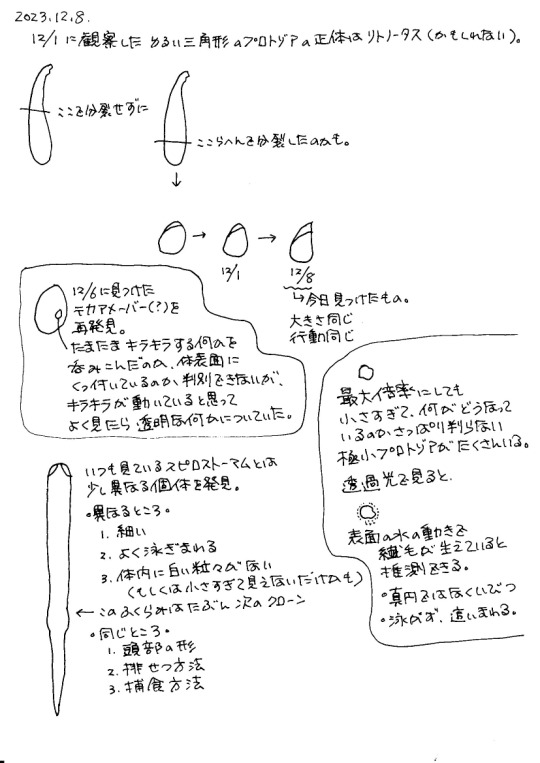
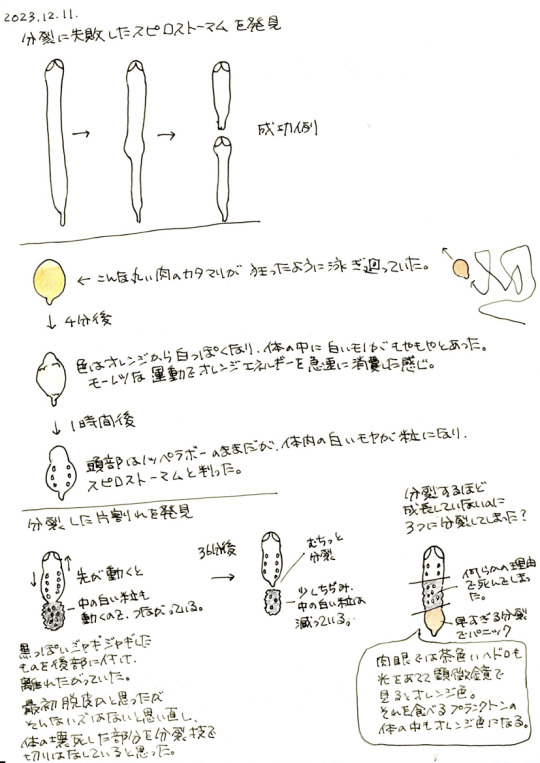
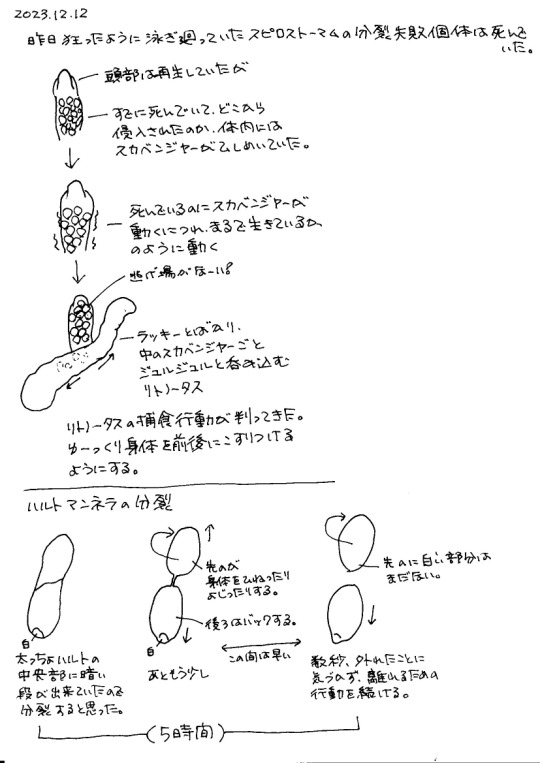
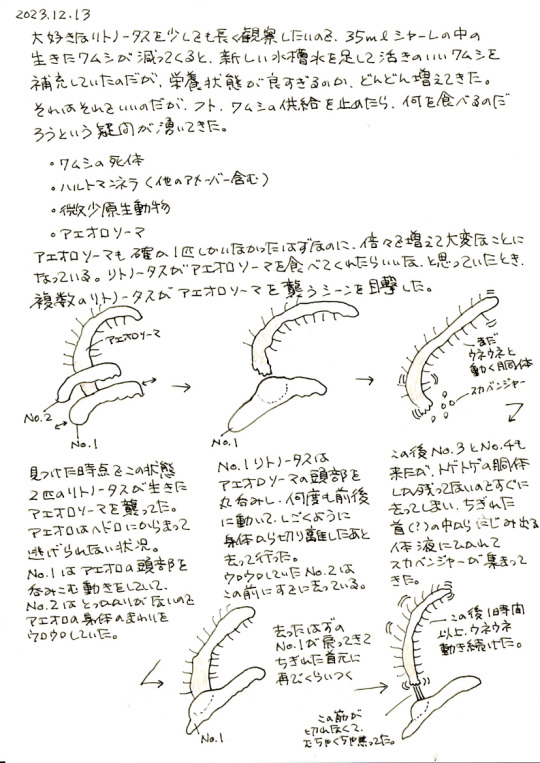
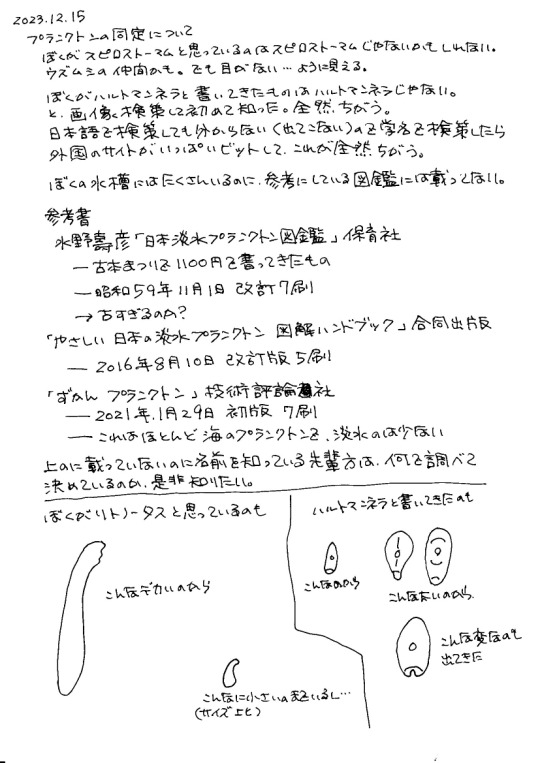
プランクトン観察絵日記 Plankton diary 12/8-12/15
The stereo microscope I use has a maximum magnification of 50x. The microscope used in the illustrated book is called a biological microscope, and has a magnification of over 200x. It is very difficult to find out the names of plankton visible under a stereomicroscope in photos taken with a biological microscope.
問題は、メーカーの最大倍率の高価な接眼レンズを使うと200倍まで見えるけど、ぼくが使っている接眼レンズはワイドアングルの10倍。最大ズームが5倍だから、総倍率50倍なんだな。
もう一つ問題があって、実体顕微鏡は双眼鏡と一緒で接眼レンズ2個で双眼。対物レンズも(カバーで隠れているけど)実は2個あって、それで対象物を立体的に見る。上や横から光を当てるから、色や膨らみがよくわかる。ワムシを飲み込んだリトノータスを見ると、それがフトネズミワムシなのか、エナガワムシなのか、サラワムシなのか、がよく分かる。飲み込んだ直後なんか、ワムシの足(足偏に止)まで見えるから頭から飲み込んだなって分かったりする。
図鑑で使われている顕微鏡は生物顕微鏡と言って、倍率が格段に違う。しかも光を下から当てて単眼で見ているから、見える映像が全然違う。立体的には見えない。実体顕微鏡でもシャーレの下にアルミホイル敷いて、ホイルに光を当てればなんちゃって透過光で見えたりする。すると、全部透明な体に半透明な粒々が見えているだけだから、ワムシ飲み込もうがワムシじゃないもの飲み込もうが、リトノータス本来の体内の粒々と飲み込まれたワムシの体内の粒々の区別がよくわからない。
低倍率の実体顕微鏡で見えるほど大きなプランクトンしかぼくは見えない。「やさしいずかん」がちっとも優しくなくて、実体顕微鏡で見えないほど小さなプランクトンの解説されてもなー、って感じ。
生物顕微鏡も買えばって話だけど、ぼく、片目で見るとしんどいんだよ。両目で見たいの。立体的に見たいの。平面で透明な粒々ばかり見るのつまらんでしょう。
0 notes
Text
FUE Hair Transplant - Benefits And Steps Discussed

What Is A FUE Hair Transplant?
FUE or Follicular Unit Extraction is one of the techniques for performing hair transplant surgery. It is an advanced, minimally invasive hair restoration option performed by a skilled cosmetic surgeon specializing in hair transplantation. Do you know why FUE is considered the best hair transplant in Gurgaon. This article will dive into the benefits of this amazing hair transplant or hair restoration technique for both males and females and will also discuss the procedure benefits in detail with the expert insights shared by Dr. Shilpi Bhadani, the best hair transplant surgeon in India practicing at SB Aesthetics.
This suture-less hair transplantation method works by removing healthy donor hair using a micro punch tool and relocating them to bald or thinning regions of the scalp. The donor hair follicles are implanted at the recipient site at precise angles so that they blend with the existing natural hair and resemble the normal hair growth pattern.
Steps Involved in FUE Hair Transplantation
Step 1 (Providing Anaesthesia)- FUE hair transplantation procedure is performed whilst the patient is under local anaesthesia. On the day of the operation, the entire donor site of the patient's head, usually the back or side of the scalp, is trimmed to 1-2 mm in length. The patient is asked to lie in the prone position and local anaesthesia is administered over the donor and recipient sites.
Step 2 (Extraction of follicular units)- Once the donor area feels numb to the patient, the surgeon starts the extraction process of hair follicles individually. The grafts are extracted with the help of special micro punches of diameters 0.8 and 1mm. It is done under a stereomicroscope under 2.5 to 5X magnification.
Firstly, the sharp side of the micro punch tool is used to score the scalp skin having the follicular units. Next, the other side of the tool is used in the same area to twist and loosen the follicular unit. Simultaneously, counter traction is applied by the surgeon’s assistant to facilitate the penetration of the micro punch tool inside the skin dermis. The grafts are taken out gently using forceps and preserved in cool saline solution or Ringer’s lactate solution until they are used further. The extracted grafts contain 1 to 4 hair or sometimes 5 to 6 hair.
Step 3 (Implantation of extracted grafts)- The extracted grafts are inserted into the recipient sites of the scalp with the help of a special sub-millimeter technique. Firstly, the sites due to receiving the hair follicles are punctured. Next, the surgeon’s artistic touch is applied to precisely place the extracted grafts one by one into the holes created at the recipient site. At this time, the surgeon must consider hair depth, direction, angulation, and density to deliver a natural look as much as possible.
After FUE hair transplantation
In the initial one to three months, the newly transplanted hair sheds. The hair grows back in 4 to 12 months following the surgery and the patient can enjoy the final desired results.
Benefits of undergoing FUE hair transplantation
No linear visible scars- FUE hair transplantation involves the use of micro punch devices to puncture the donor site. The donor site heals leaving behind dot-like scars of less than a millimeter in diameter. Once the hair grows back to grade 1 and grade 2 levels of the Norwood Scale, these FUE scars go unnoticed.
Quick healing- FUE hair transplantation is reliable and effective. With FUE hair transplant, the operated sites could heal within a week, unlike FUT hair transplant where healing takes months. Thus, the patient can resume a normal routine a week after the surgery.
No use of sutures- There is no incision made, so there is no need for stitches. The procedure is completely painless as it is carried out under local anaesthesia.
Lifetime results- FUE hair transplantation is recognized for its consistency. It provides natural-looking, permanent results. The patients can eliminate their baldness and look youthful again.
Minimal risks- Post-operative infection rarely occurs with FUE hair transplantation. The chances of having any surgical complications are very small because this surgery doesn’t harm the body. There is no guesswork and manual work by the surgeon as associated with other hair transplant methods. The patient is likely to experience fewer transient and minor side effects.
Large covering areas- The FUE hair transplant surgery allows the surgeon to cover most of the bald scalp because of more extracted grafts. Thus, it produces a decent hair restoration, much better than FUT hair transplantation.
Ideal for people having tight scalp- Some hair loss patients possess very thin and tight scalp skin and so are not able to undergo many hair restoration treatments. For such patients, FUE hair transplantation is an ideal solution.
Minimal downtime- Following FUE hair transplant surgery, small bumps or dot-like scars appear all over the donor site. Their healing takes less time than a linear scar resulting from FUT hair transplant surgery. Furthermore, there is no severe trauma to both the donor or recipient areas as well as no use of scalpels or stitches and so the donor wound heals in just a few days.
At SB Aesthetics, the hair transplant clinic, the Best Cosmetic Surgeon in Gurgaon, offers the most advanced procedure for hair restoration. Many other hair restoration techniques like power shots, growth factor treatment, mesotherapy, microneedling, and even customized solutions are offered for managing concerns like hair loss or alopecia.
People of all age groups visit SB Aesthetics to achieve the best results for hair loss concerns. Dr. Shilpi Bhadani first diagnoses the root cause of the concern and then offers treatment based on one requirement and needs. This helps her to deliver the best outcomes to her patients and help them to get back a healthy scalp that is full of new hair growth and radiant hair. One can also visit her clinic to learn more about the ultimate benefits of a hair transplant procedure, who is an ideal candidate, what is the cost of the procedure, and what aftercare and diet are required with hair transplant treatment at SB Aesthetics, state of art Hair Transplant Clinic in Gurgaon.
0 notes
Text

LCD digital stereo microscop
LCD digital stereo microscope is a bench-top unit that features nine inches HD TFT screen display for easy and comfortable viewing. Built-in LED ring light illuminator with four-zone control of intensity. Provision to save the image and videos for feature reference.
#stereo microscope with camera#leica stereomicroscope#amscope stereo microscope#leica dissecting microscope
0 notes
Text
https://hsmleindia.com/product/stereo-microscope-hsm-3c/
Stereo Microscope 3c
Stereo Microscope-HSM-3C model with Sharp stereo erect image over a wide field of view. 45°inclined head with locked-in eyepiece. The left ocular-tube with diopter adjustment ±5dp, The interpapillary distance is between 55-75mm. Most modern stereo microscopes are designed with an erect image configuration, meaning that the observed image is presented in the correct orientation. However, it’s always a good idea to check the specifications or product descriptions to ensure that the microscope you are interested in provides an erect image.
Stereo microscope with an erect image refers to a type of stereo microscope that provides an image that appears in its correct orientation, similar to how we see objects with our naked eyes. In some microscopes, the image may appear inverted or reversed due to the optical path design.
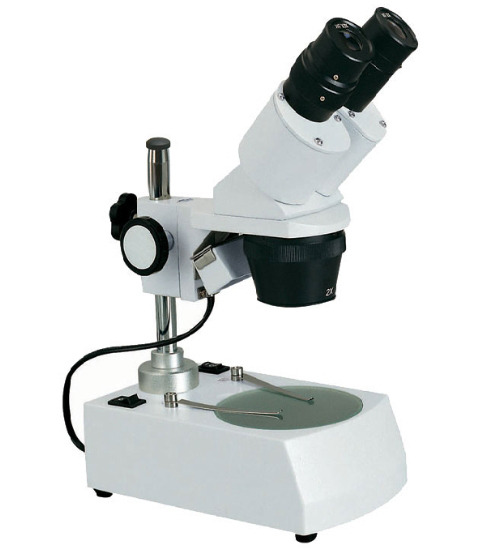
#manufacture#manufacturer#metallurgical#microscope#microscopes#metallographicequipments#metallurgicalmicroscopes#industrial equipment#testing#zoom stereo microscope#binocular stereo microscope#stereomicroscope#stereozoommicroscopes#stereo microscope applications#microscope manufacturer#microscope supplier#microscope manufacturer in india#microscope supplier in india#stereo microscopes manufacturer in india#stereo microscopes supplier in india#stereo microscopes in uttar pradesh#stereo microscopes supplier in uttar pradesh
1 note
·
View note
Text
5 Amazing Benefits of FUT

It may feel as though a piece of one’s identity is missing when one loses hair. So it makes sense to know what possibilities there are for hair restoration. One such method is a Follicular Unit Transplant (FUT) for hair restoration. In this procedure, the patient's hair is taken from the scalp that has hair and is transplanted into the treating area (the area that doesn't have hair).
The primary objective of the FUT procedure and its main benefit are to produce natural-looking outcomes with a manageable recovery period. However, the word "transplant" can be a little frightening, so this blog will explain the benefits of FUT. This blog is drafted by taking insights from the hair specialists as well as the dermatologists who are experts in performing hair transplants, such as the specialists of the Citrine Clinic, which provides an effective FUT Hair Transplant in Gurgaon. Let’s dive in to get the detailed information.
What is FUT?
During the FUT procedure, the donor hair follicles are retrieved from the back of the patient's scalp after the patient has been given anesthesia. The doctor creates tiny openings (called recipient sites) in the scalp where the follicular unit grafts are placed. These tiny units are used in follicular unit transplantation to safely transplant thousands of grafts in a single session, maximizing the procedure's cosmetic benefit.
The follicular unit grafts' organization and placement affect their long-term viability, aesthetic appeal, and the hair transplant outcomes. The patient's individuality, hair loss history, and potential for future hair loss are all taken into consideration. If a follicular unit transplant is done correctly, the outcomes will resemble how hair develops naturally, and the procedure won't be noticeable as a hair transplant altogether the results would be natural.
Benefits of FUT
The procedure of a FUT hair transplant has many advantages. For the following reasons, a lot of patients think about obtaining a FUT hair transplant:
Less Time-consuming
In a short period of time, a person can restore a lot of hair. The surgeon doesn't need much time to complete this hair transplant surgery. The permanent zone in FUT can give the surgeon more than 3,000 transplants.
Graft Level
The follicular units are methodically separated during FUT, retaining their protective coating while being scrutinized under stereomicroscopes. This technique results in high-quality grafts and complete coverage.
The Viewpoint on Scars
After FUT hair transplants, patients may not worry excessively about scars. Because hair follicles continue to grow for a long time after the scar has healed, the single-line scar is really much less apparent. The FUT scar is, therefore, almost invisible.
Higher Rate of Follicle Survival
The hair that was implanted during a FUT hair transplant does not fall out easily. Thus, giving a high rate of follicle survival.
Minimizing Scalp Injuries
A crucial component of FUT is minimizing harm to the scalp because having the hair emerge from absolutely normal skin is essential for a natural-looking hair transplant. To do this, the doctor removes any extra tissue surrounding the follicular units.
FUT Hair Transplant Success Rate
FUT has an advantage over other procedures like Follicular Unit Extraction (FUE), as FUT has a better survival rate. 85–95 percent of the implanted grafts thrive without difficulty in the transplanted location. Hair transplant surgery has a high success rate and efficiency based on customer satisfaction, which is a crucial factor in the calculation. FUT procedures may potentially raise the success percentage to 95–95% if the surgeon takes a meticulous approach.
What to Expect After FUT?
Recovery from FUT typically takes up to 5 weeks. To get the results one wants from the surgery, one must adhere to strict guidelines of post-operative care provided by the hair surgeon.
Wait at least five days before taking a shower or washing the hair.
Use only the recommended, mild shampoos to wash the hair.
Get as much rest as possible to promote healing.
Till the doctor gives the all-clear, refrain from brushing and combing the hair, and do not cover it with caps or beanies.
Avoid engaging in any vigorous exercise.
Maintain a healthy diet and increase the water intake.
For effective treatment, take recommended drugs and attend scheduled appointments.
Potential Consequences of FUT
FUT-related problems are very uncommon. Individuals may, however, encounter certain typical side effects, such as:
Forming bumps or scars that will eventually disappear or can be covered up with hair.
For the first few months, the hair may have an unnatural appearance.
Swelling, scabbing, and pain, which will go away with the use of medication.
Hopefully this blog has acquainted one with the basic understanding of FUT hair transplant and its advantages. However, which technique will suit one the best would only be decided by the doctor after a thorough examination.
If one is considering getting a hair transplant but is unsure of the procedure, speak with a medical professional. The leading hair specialists at the Citrine Clinic will walk one through the entire procedure. One can also consult this best skin clinic in Gurgaon for getting effective medical and cosmetic skin treatments such as treatment for acne, pigmentation, melasma, moles, warts, etc. Pay a visit now!
0 notes
Text
Advanced Dermatology Treatments for Hair Loss in Bangalore
Hair fall or hair loss is a very distressing issue that many people face worldwide. It is a common condition that causes pattern baldness, receding hairlines, or hair thinning if there is sudden or gradual hair loss above 50-100 hair strands daily.
Although various factors can cause hair loss, the most common is androgenic alopecia, a hereditary factor affecting both men and women. Hormonal changes, scalp infections, hair-pulling disorders, certain medications, and skin problems are all possible causes.
People going bald are self-conscious about their appearance and want to regain their natural-looking, thick, healthy hair.
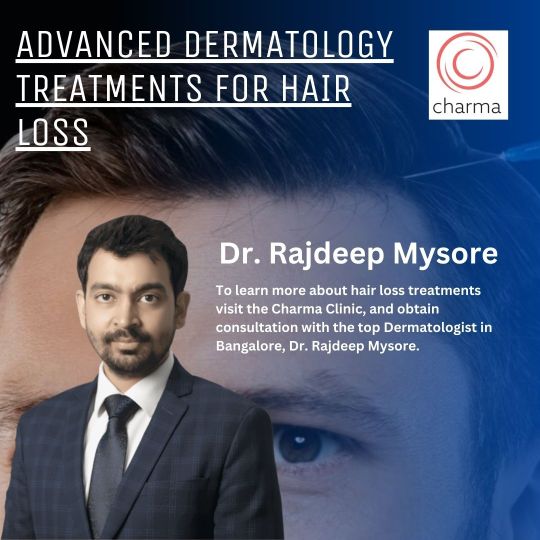
Charma Clinic, a leading dermatology clinic offers the best hair loss treatment. Treatments like mesotherapy, growth factor and Hair Transplant in Bangalore are offered at the clinic that can help make a full head of hair possible. In this blog get to know more about hair transplant procedure, which is considered as the promising treatment for managing baldness.
What is Hair Transplant treatment?
It is a surgical procedure that transfers existing hair follicles to areas of the scalp with thin or no hair. This technique replaces damaged or old hair follicles with new, healthy hair follicles that can grow hair. Following transplantation, the new strands are well-nourished by a blood supply from blood vessels connecting the hair roots. This promotes new hair growth at the recipient site, which was previously bald or had thin hair. Hair grafts are typically taken from the back or sides of the head but can also be taken from other hairy areas.
Follicular unit extraction (FUE) and Follicular unit transplantation are the two hair transplant methods (FUT). Based on the patient's scalp condition and needs, the surgeon may choose between the two. The surgeon sterilizes and numbs the area where the hair will be removed before performing a hair transplant. The outcomes of a hair transplant may differ depending on the individual.
Schedule a consultation with Charma Clinic's expert doctor for Hair Transplant and Hair Loss Treatment in Bangalore to determine which transplantation surgery is best for one’s condition.
Follicular Unit Extraction:
Follicular Unit Extraction is a cutting-edge hair transplantation technique that advances the field of hair transplant surgery and brings it one step closer to a minimally invasive procedure. A follicular unit is a group of one to four hair follicles that develop into the hair. The entire follicular unit is uprooted from the donor sites, such as the back or sides of the scalp, using automated punches during the FUE procedure. Hair on the chest, back, and beard can sometimes serve as a donor site.
Then, hair follicles (which will eventually be considered a hair graft) are extracted individually from each follicular unit. After creating holes or slits at the recipient site with a needle or scalpel, each hair graft is implanted in the bald areas. Approximately 4,000 hair follicles can be transplanted in a single session.
Follicular Unit Transplantation:
Follicular unit transplantation, known as a strip method, is a type of hair transplantation in which a long, thin strip of scalp tissue of hair follicles is extracted from the back of the head. The strip size required is determined by the number of hair follicles needed to cover the bald patches. Typically, the width of the strip is between 0.4 and 0.6 inches.
The removed strip is dissected further with a stereomicroscope, and the individual follicular units are harvested. When the hair grafts are ready, they are precisely re-inserted into the balding or thinning areas of the scalp. The injured donor site is sutured, forming an excellent linear scar.
FUT may be a better solution than FUE for people who have significant balding at the top of their heads because it provides better coverage and fullness of the head.
This procedure is expected to transplant approximately 6,000 strands, restoring complete hair. Hair transplantation, on the other hand, takes 4 to 8 hours. The FUT procedure is usually faster than the FUE procedure.
Who is an Ideal Candidate for Hair Transplant?
Ideal candidates for hair transplantation surgery include:
People over the age of 25 and under the age of 65. Patients under 25 have less predictable hair loss patterns because they are experiencing premature hair loss, which may change with age. This treatment may not be suitable for people over 65 due to hair thinning, but they are still eligible.
Men with the pattern of hair loss or an M-shaped hairline, where hair is lost from the temple region, and women with the Ludwig pattern of hair loss, where hair is lost from the crown of the head. As they have good donor hair follicles that can be harvested, they tend to respond best to hair transplantation.
People with healthy, dense hair growth in some areas of their scalp. Hair transplantation in them would improve hair coverage in bald areas.
Men and women have lost their hair due to scalp trauma or burns but are otherwise healthy.
Individuals with similar hair and scalp skin color. They have less visible baldness than people with different hair and skin tones.
Various other hair loss treatment options like microneedling, mesotherapy, growth factor treatment are also combined with the hair transplant procedure for best outcomes. To learn more about hair loss treatments visit the Charma Clinic, and obtain consultation with the top Dermatologist in Bangalore, Dr. Rajdeep Mysore.
Original Source:- https://charmaclinic.blogspot.com/2023/04/advanced-dermatology-treatments-for.html
#dermatologist#healthy skin#skin care#skin treatment#hair transplant#hair loss treatment#haircare#laser hair removal
0 notes
Text
How to Prepare for FUT Hair Transplant Surgery?

Follicular Unit Transplant (FUT) is a strip procedure that involves removing a linear strip of hair from the donor area of the scalp and implanting it into the recipient area. Under a stereomicroscope, the strip of hair follicles is dissected and divided into grafts of 1-3 follicles. These grafts are then placed into incisions made on the recipient part.
In this blog, Dr. Sumit Agrawal shares a set of instructions to follow before the surgery. The leading hair transplant doctor at Harleys hair transplant clinic is widely known for performing the best FUT Hair Transplant in Mumbai. Continue reading to learn more.
Preparing for Hair Transplant - Instructions to Follow
Avoid smoking at least 24 hours before the surgery. Smoking can affect wound healing and also affects recovery. Therefore, one should temporarily put it on hold.
Avoid having alcohol three days before the surgery. It is advised to have the last alcoholic drink a week before the FUT hair transplant surgery.
Avoid having a haircut before the surgery. Letting the donor area grow so that there is enough hair for the transplant is vital. Also, it will cover the stitches following the surgery.
A month or two before the procedure, massage the hair gently. Do this every day for a minimum of 10 minutes or a maximum of 30 minutes. The epidermis will become softer, and the tone will be improved as a result. Additionally, it will increase blood movement there.
Depending upon the degree of hair loss, one might have to take medications such as minoxidil (trade names regaine and rogaine) before the surgery (as per the doctor’s instructions). One might be asked to take antibiotics beforehand to prevent the risk of infection.
If the patient is above a certain age, i.e., 45 or above, the hair transplant experts may ask them to undergo tests such as ECG or blood test before the procedure.
Avoid taking aspirin or any anti-inflammatory medication two weeks before the surgery.
Avoid taking anti-depressants or blood-thinning drugs two weeks before the surgery. At Harleys hair transplant clinic, the hair transplant doctor will provide the patients with a list of medications they can or can not take beforehand.
Avoid taking any multivitamins or herbal supplements two weeks before the surgery.
Follow the doctor’s instructions as advised to have the most successful outcomes.
Visit Harleys Hair Transplant Clinic to Get the Best Hair Transplant in Mumbai
If one has decided to avail the benefits of a FUT hair transplant, one can schedule a consultation with Dr. Sumit Agrawal to get a personalized plan. He is a leading hair transplant specialist who has successfully performed more than 2,500 hair transplants. He has expertise in both the FUT (strip) and FUE techniques. If there are any follow-up questions, please do not hesitate to contact Harley Hair Transplant Clinic to get the Best Hair Transplant in Mumbai.
For more information about FUT hair transplants, visit the best hair transplant clinic today!
0 notes